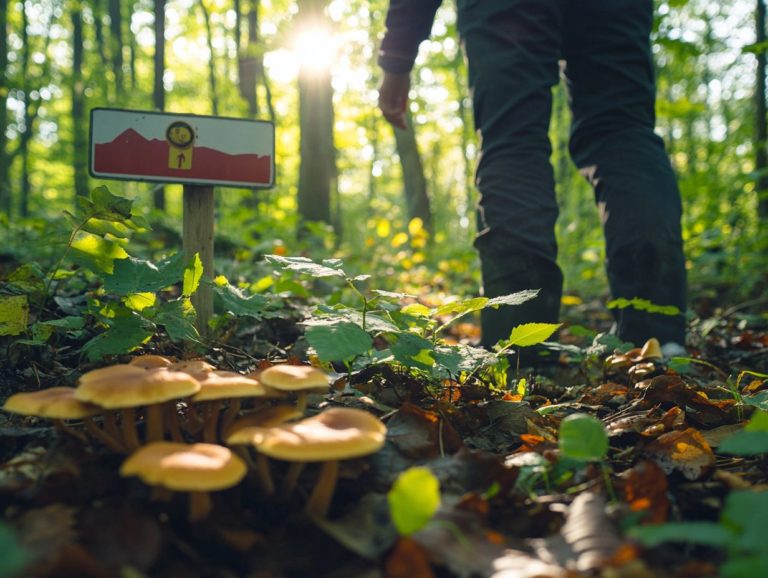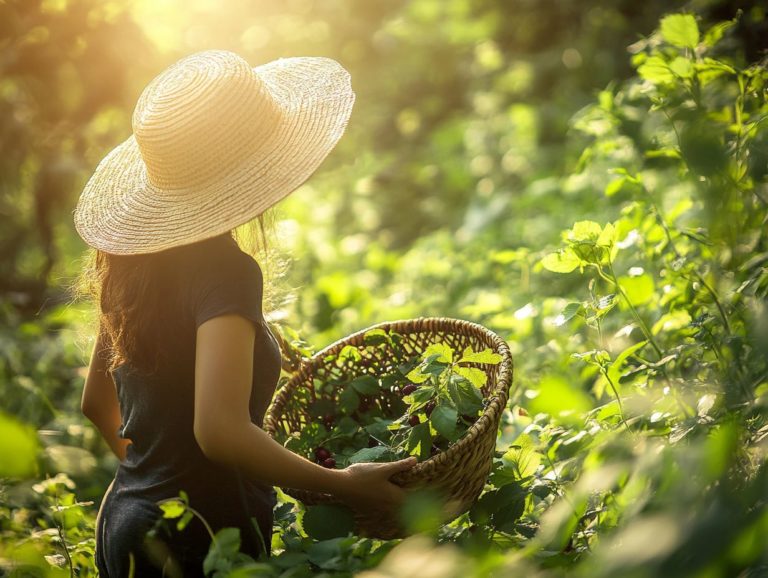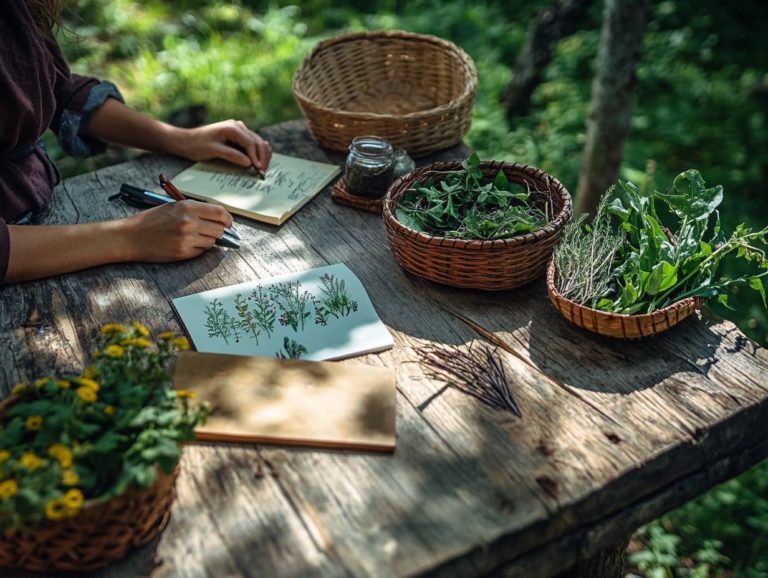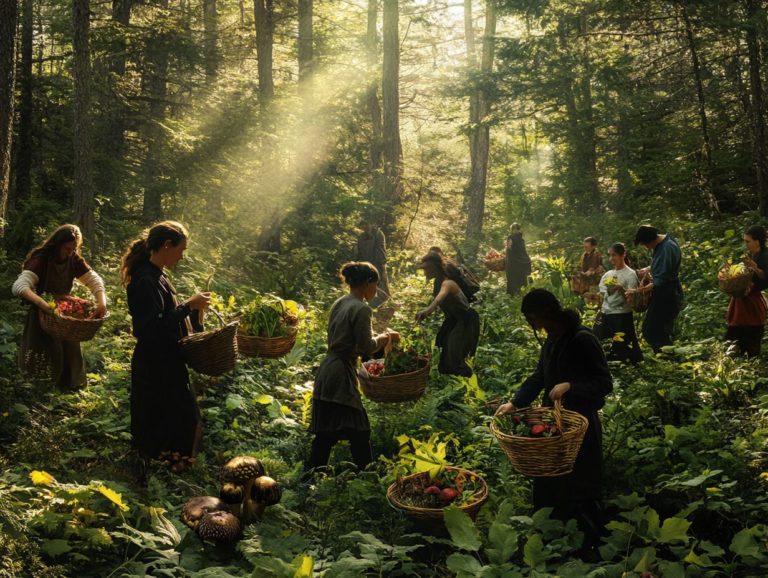Wild Edibles: Sustainable Harvesting for Future Generations
Wild edibles present a remarkable array of flavors and nutrients, just waiting for you to uncover them in the great outdoors through foraging.
This exploration highlights the significance of sustainable harvesting practices, ensuring that these natural treasures remain plentiful for generations to come while benefiting both humans and nature.
You ll discover essential guidelines for ethical foraging, along with tips for safely identifying and preparing wild plants. Plus, you ll learn about the benefits of incorporating these nutrient-dense foods into your diet.
Embark on this journey toward a more sustainable and flavorful way of eating!
Contents
- Key Takeaways:
- Sustainable Harvesting Practices
- Identifying and Preparing Wild Edibles
- Benefits of Incorporating Wild Edibles into Your Diet
- Frequently Asked Questions
- What are wild edibles?
- Why is sustainable harvesting important for future generations?
- What are some examples of sustainable harvesting practices?
- How can I ensure I am harvesting wild edibles in a sustainable way?
- Are there any potential dangers or risks associated with harvesting wild edibles?
- Can anyone harvest wild edibles?
Key Takeaways:
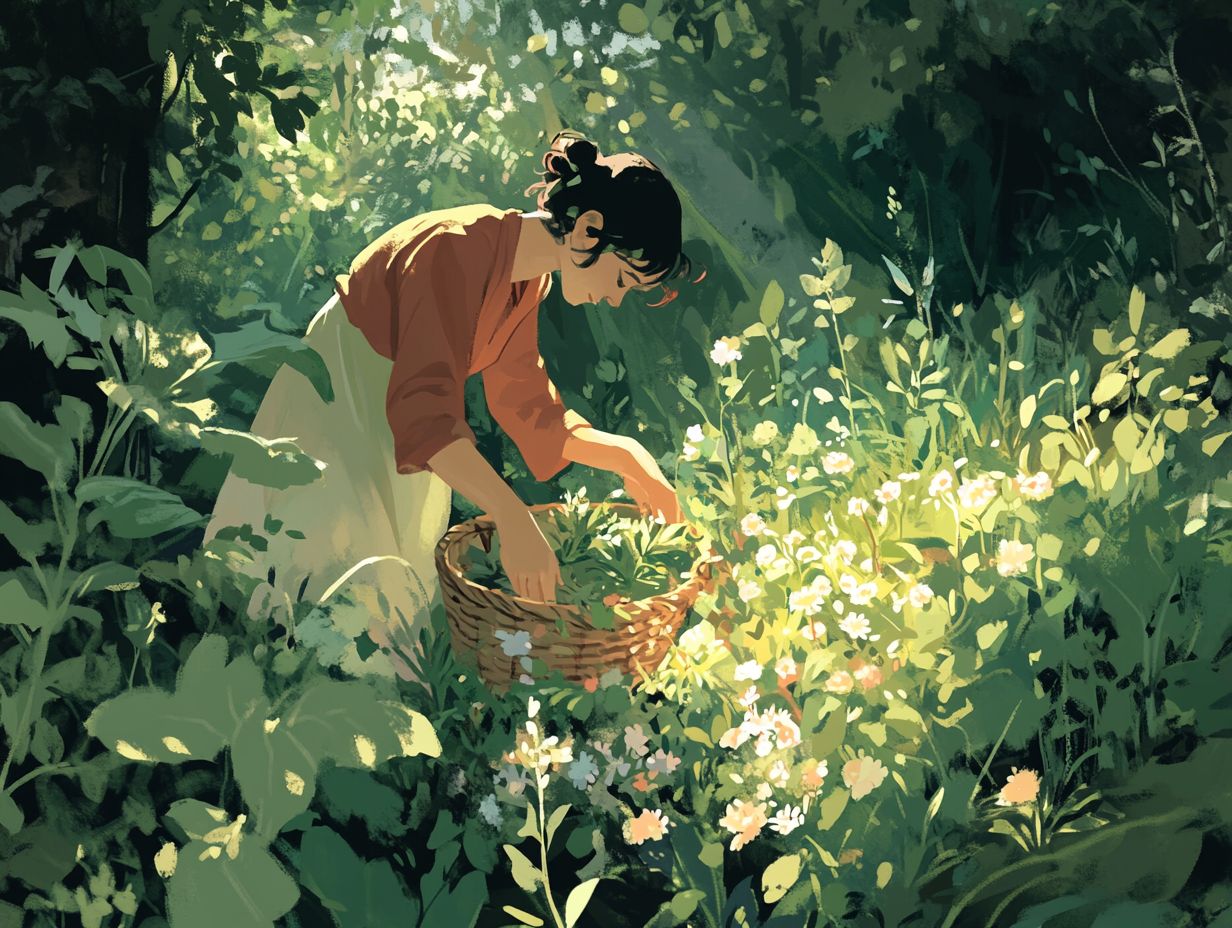
- Sustainable harvesting of wild edibles is crucial for preserving their availability for future generations and maintaining a healthy ecosystem.
- Ethical harvesting guidelines, such as only taking what is needed and leaving enough for wildlife, are key to ensuring the sustainability of wild edibles.
- Incorporating wild edibles into our diets not only provides nutritional benefits but also promotes a more sustainable and environmentally friendly way of consuming food.
What are Wild Edibles?
Wild edibles represent a fascinating array of plants awaiting your discovery in natural ecosystems. They offer essential nutrients and flavors that can elevate your diet while promoting a sustainable food system one that meets our needs without harming the environment. Varieties such as black walnuts and garlic mustard not only provide nutritional benefits but also contribute significantly to biodiversity and conservation efforts.
Foraging connects you with traditional knowledge that has been treasured for generations. This enhances food security and empowers communities to lean less on commercial food sources. By incorporating wild edibles into your meals, you diversify your diet and actively support the preservation of local ecosystems.
This shows how important it is to conserve the natural habitats where these plants flourish. It ensures the delicate balance of biodiversity that is crucial for the resilience of our food systems.
Embracing wild edibles as both culinary delights and ecological treasures can inspire you to adopt a more responsible approach to environmental stewardship and foster a sustainable method of food sourcing.
Sustainable Harvesting Practices
Sustainable harvesting practices are essential for striking the right balance between resource use and environmental conservation. These practices allow ecosystems to flourish while still meeting human needs for food and materials.
By embracing these methods, you contribute to biodiversity and foster responsible foraging within your community one which honors both nature and traditional knowledge.
Understanding sustainable harvesting helps you reduce the environmental impact of your food systems and effectively adapt to the challenges posed by climate change.
Why is Sustainable Harvesting Important?
Sustainable harvesting is vital for preserving our planet’s biodiversity and ecosystems. It allows you to benefit from nature’s resources without causing degradation or risking species extinction.
By adopting practices that minimize environmental impact, you’re not only protecting the ecosystems you depend on but also playing a crucial role in the fight against climate change and supporting conservation efforts.
This connection shows why biodiversity matters in maintaining food security and ecosystem stability. A vibrant tapestry of species ensures crops are pollinated, pests are managed naturally, and soil remains fertile, ultimately resulting in healthier food systems that thrive with the help of wildlife.
When you prioritize sustainable harvesting practices, you help mitigate the risk of habitat loss and enhance the resilience of ecosystems. This better equips them to withstand environmental changes.
By safeguarding biodiversity, you make a real difference for biodiversity, contributing to a balanced ecosystem, which is vital for a stable food supply as it supports the natural processes driving agricultural productivity.
Guidelines for Ethical Harvesting
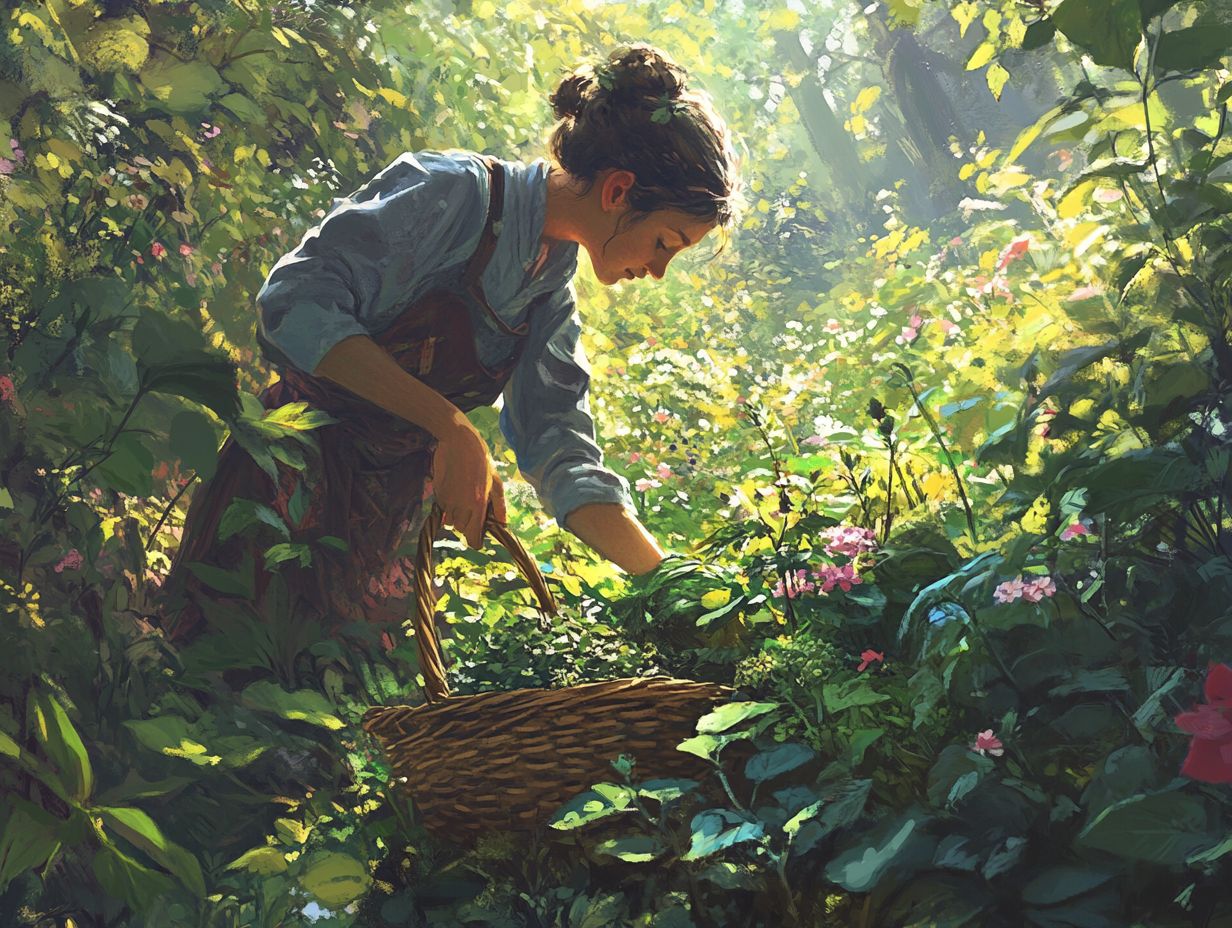
Ethical harvesting guidelines are vital for collecting wild edibles responsibly. This approach promotes conservation and sustainability while respecting local ecosystems and communities.
By following these guidelines, you can minimize your environmental impact and contribute to the preservation of biodiversity and knowledge passed down through generations.
Ethical harvesting practices benefit the environment and empower communities to engage in sustainable food sourcing, fostering a deeper connection between people and nature.
To get started, familiarize yourself with local regulations on wild harvesting to ensure your actions align with national and regional laws. Engaging with local communities provides invaluable insights into sustainable foraging techniques and enhances communal knowledge.
Embrace knowledge passed down through generations, which offers unique perspectives on species abundance and habitat health insights that can guide your responsible collection methods.
By prioritizing ethical considerations, you will safeguard biodiversity and cultivate a more sustainable future for both the environment and the communities that depend on it.
Identifying and Preparing Wild Edibles
Identifying and preparing wild edibles can be an exciting adventure that marries the art of foraging with a deep understanding of local plants. This journey allows you to incorporate nutritious and flavorful plants into your diet, enhancing your culinary experience.
Mastering this skill not only enhances food security but also deepens your connection to nature and the rich tapestry of traditional knowledge. You begin to appreciate the medicinal properties and culinary potential of various wild edibles, transforming your relationship with food.
By learning to identify and prepare these remarkable plants, you actively contribute to conserving biodiversity and fostering sustainability within your community.
Tips for Identification
Identifying wild edibles requires cultivating a keen understanding of local plants and their ecological roles, blending that with knowledge passed down through generations.
By observing essential characteristics such as leaf shape, flower color, and habitat, you can skillfully distinguish between edible and non-edible species, ensuring a safe and enjoyable foraging experience.
This journey heightens your awareness of biodiversity and deepens your connection with nature, nurturing a sense of stewardship for the ecosystems that yield these wild treasures.
Understanding the specific ecosystems where these plants flourish is crucial. For example, wetlands may offer a bounty of edibles that differ from those found in dry woodlands.
As a foraging enthusiast, look for visual cues like the texture and arrangement of leaves or even the scent of flowers, as these can signal the presence of particular species. Familiarity with local flora, including the plants that share similar habitats, will help you distinguish between delectable food sources and their toxic look-alikes.
Engaging with local communities or joining foraging groups can further enrich your knowledge, as fellow members often share invaluable insights from their experiences. This enhances your overall foraging adventure and supports public policy efforts in conservation.
Safe Preparation Methods
Preparing wild edibles safely is essential for savoring their unique flavors and health benefits while minimizing risks linked to unfamiliar plants. By adopting safe preparation methods that honor traditional knowledge and culinary practices, you can elevate your food experiences and promote ecological awareness.
This journey highlights the importance of getting food sustainably and celebrates the rich variety of flavors and nutritional benefits that wild edibles can bring to your diet, enhancing community food security.
As you delve into the realm of wild edibles, employing various methods such as cooking, drying, and preserving becomes vital for ensuring both safety and taste. Cooking can effectively eliminate harmful toxins present in certain plants, while drying extends their shelf life, allowing you to enjoy them throughout the year.
Preserving whether through pickling or fermenting not only enhances flavors but also connects you to time-honored techniques rooted in tradition. Master these practices to connect deeply with your environment and foster a more thoughtful and appreciative approach to foraging and utilizing nature’s offerings.
Benefits of Incorporating Wild Edibles into Your Diet
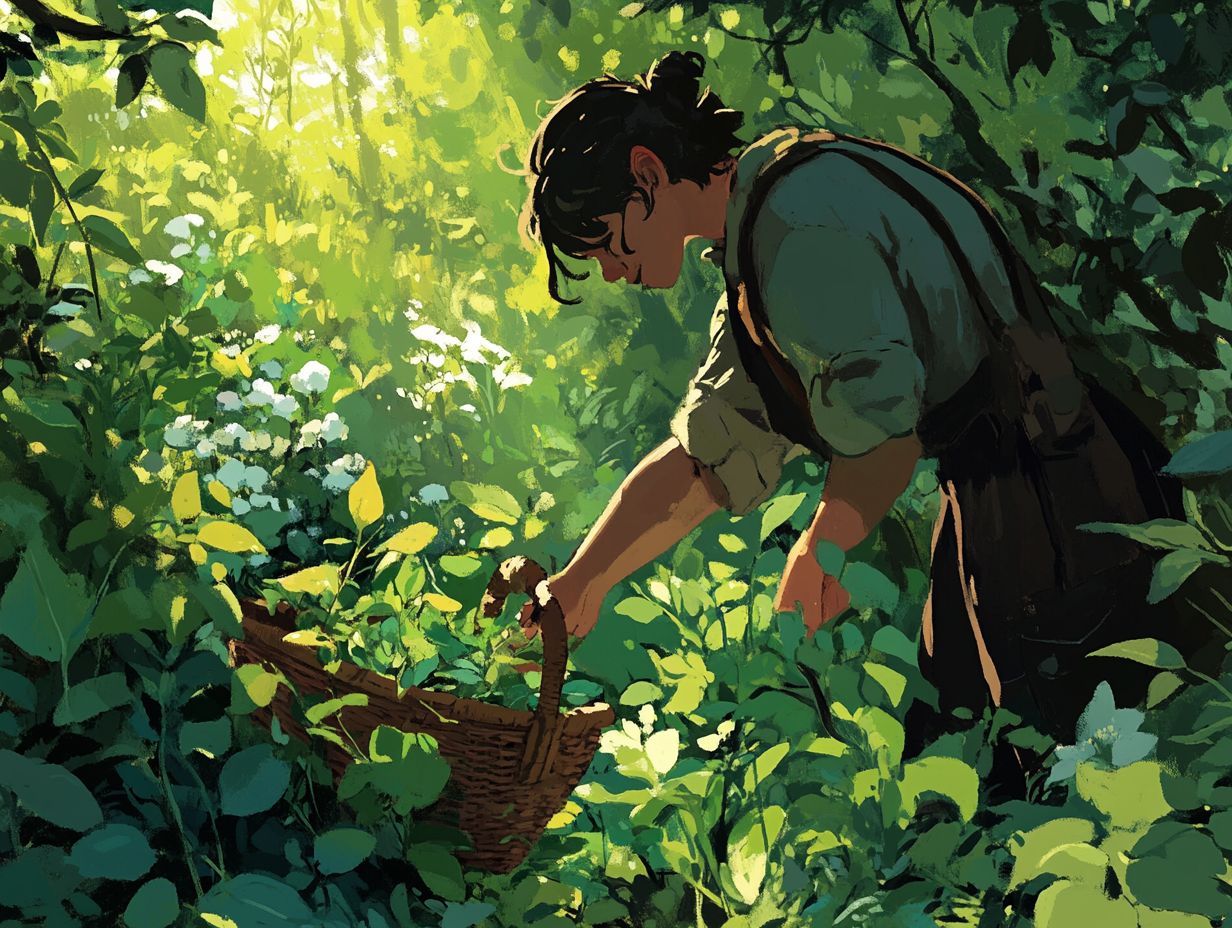
Incorporating wild edibles into your diet offers many benefits, elevating nutritional value while supporting a sustainable food system that bolsters local communities and biodiversity.
These plants deliver distinct flavors and vital nutrients that enhance your overall health. The act of foraging fosters environmental awareness and responsible harvesting practices.
By embracing wild edibles, you not only enrich your meals but also actively contribute to the conservation of ecosystems and ensure food security within our urban food system for generations to come.
Nutritional Value and Environmental Impact
The nutritional value of wild edibles often surpasses that of cultivated plants, offering essential vitamins, minerals, and antioxidants that strengthen your health. By incorporating these remarkable plants into your diet, you support biodiversity and promote sustainable ecosystems, enhancing food security and reducing dependence on conventional agriculture practices.
Many wild greens, like dandelion and nettle, as well as garlic mustard, are packed with iron and calcium, outmatching cultivated varieties such as spinach. These foraged treasures often contain phytochemicals beneficial to your health and help improve soil quality while supporting local floras and wildlife habitats.
Choosing wild edibles actively contributes to conserving native plant species, which are crucial for maintaining ecological balance. Foraging lessens the demand for resource-intensive farming practices, promoting a more sustainable approach to food consumption.
Frequently Asked Questions
What are wild edibles?
Wild edibles are plants or fungi that you can safely gather and eat from the wild.
Why is sustainable harvesting important for future generations?
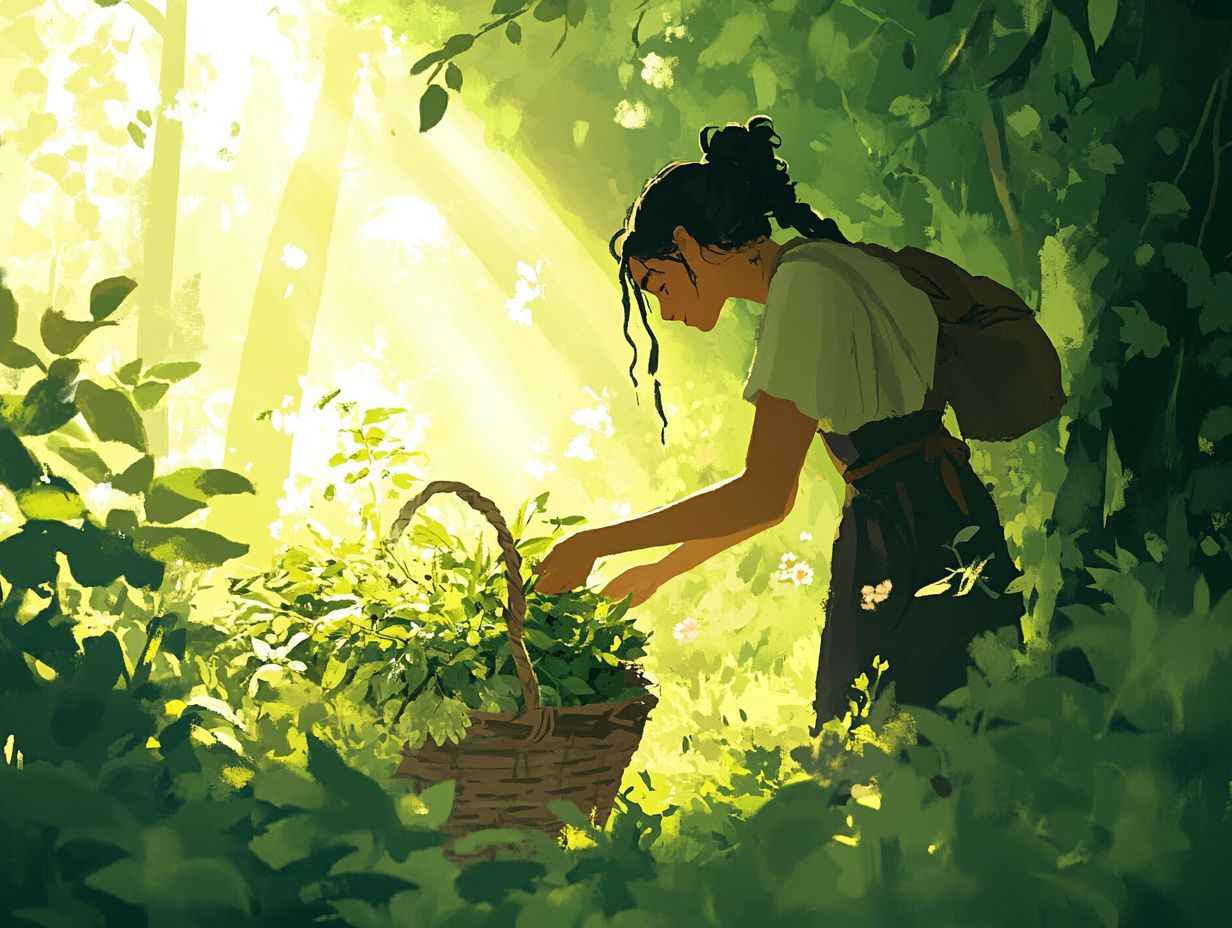
Sustainable harvesting means picking wild edibles without harming their population, ensuring they grow back for future enjoyment, which is essential in combating species extinction.
Start foraging today and discover the incredible flavors and benefits of wild edibles!
What are some examples of sustainable harvesting practices?
Sustainable harvesting means taking a small portion of a plant or fungi. Always leave enough behind for it to keep growing and avoid rare species that may be at risk.
How can I ensure I am harvesting wild edibles in a sustainable way?
Start by learning your local regulations for wild edibles. Knowing how to identify plants and using sustainable methods is crucial.
Are there any potential dangers or risks associated with harvesting wild edibles?
Yes, caution is essential. Be aware of poisonous look-alike species and avoid harming the environment.
Can anyone harvest wild edibles?
Anyone can enjoy harvesting wild edibles, especially by learning about what to forage in winter. Respect the land and follow sustainable practices to protect these resources for future generations.


